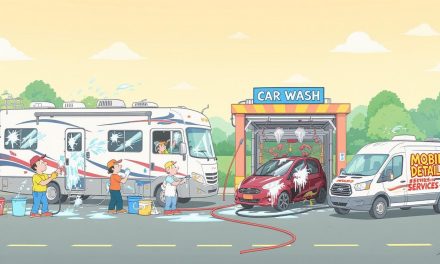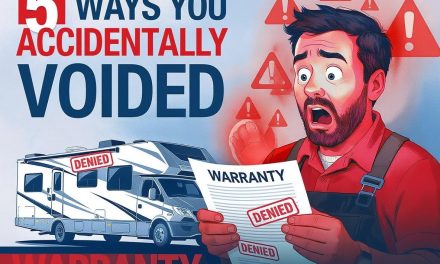Would you like to save this article?
The RV lifestyle has long been synonymous with freedom and adventure, but these days, it’s also becoming a bit of a financial rollercoaster.
As RV enthusiasts hit the road today, they’re encountering rising costs that threaten to turn their dream journeys into budget nightmares.
From fuel prices to campground fees, the expenses associated with RV ownership and travel are climbing higher than ever.
Whether you’re a seasoned RVer or a newbie looking to join the club, understanding these skyrocketing costs can help you plan your trips—and your wallet—accordingly. Let’s dive into five major RV-related expenses that have seen significant increases and explore how they impact the modern nomadic lifestyle.
1. Fuel Prices
Fuel prices have surged in recent years due to a combination of inflation and new tariffs on imported oil.
This year, RVers are feeling the pinch at the pump as diesel and gasoline prices remain stubbornly high. Tariffs on imported oil from Canada and Mexico have contributed to this spike, with some regions seeing prices climb by as much as 15% compared to last year.
Additionally, larger RVs and tow vehicles, such as the Ford F-Series or Chevy Silverado, consume more fuel, making road trips increasingly expensive for owners of these gas guzzlers. The cost of fuel alone can now account for a significant portion of an RV trip budget, especially for cross-country adventures.
At this rate, filling up your tank feels like buying a small plot of land—except you can’t camp on it!
2. RV Insurance Premiums
RV insurance costs have skyrocketed, particularly in states prone to natural disasters like California and Colorado. With wildfire risks increasing and more frequent flooding events, insurance providers are raising premiums to cover potential claims.
In some areas, RV owners are paying up to 20% more than they did just two years ago. This trend is compounded by inflation and rising repair costs for RV components damaged during disasters.
For budget-conscious travelers, these higher premiums are an unwelcome addition to their annual expenses.
At this point, insuring your RV feels like buying insurance for your insurance—because apparently everything needs double protection these days!
3. New RV Prices
The cost of new RVs has been steadily climbing due to tariffs on imported materials like steel, aluminum, and lithium-ion batteries.
Manufacturers are passing these increased production costs onto consumers, with new models seeing price hikes of 3–6% this year.
High-tech amenities such as solar panels and advanced electronics have also become pricier due to tariffs on imported goods.
While buyers looking for luxury models may still find value in premium features, mid-range buyers are struggling to justify the expense.
Buying a new RV now feels like adopting a pet elephant—expensive upfront and even pricier to maintain!
4. Campground Fees
Private campground fees have risen sharply in recent years as demand increases and operating costs climb. Premium campgrounds now charge upwards of $100 per night for full hookups and resort-like amenities.
Even basic sites at state parks are seeing fee increases due to inflation and maintenance costs. With closures of boondocking sites becoming more common due to environmental damage or disaster recovery delays, many RVers are left with fewer affordable options for overnight stays.
Who knew pitching a tent—or parking one—could cost more than staying at a budget hotel?
5. Maintenance and Repairs
Maintaining an RV has become significantly more expensive due to rising costs for parts and labor. Tariffs on imported components like electronics and specialty parts have driven up repair bills.
Additionally, shortages in skilled labor mean longer wait times and higher hourly rates at service centers. Even routine maintenance tasks like tire replacements or oil changes now come with sticker shock for many RV owners.
At this point, fixing your RV feels like performing surgery—except you’re the one paying the hospital bill!





